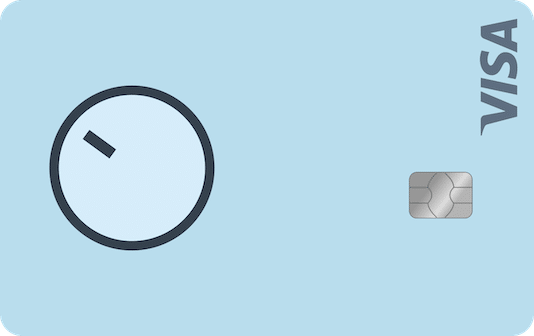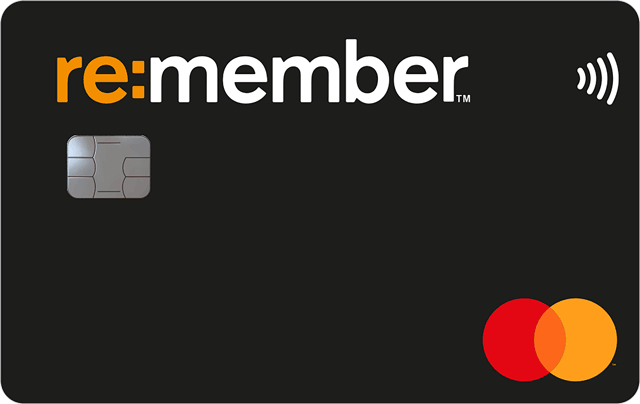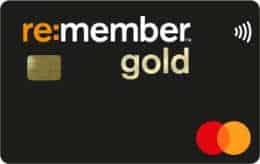Get a Credit Card today
Best Credit Cards in Norway
Compare types of credit cards
See what perks that fit you
Apply today and get an instant answer
Choosing the right credit card in Norway can greatly influence your financial flexibility and benefits. Whether you’re after rewards, low interest rates, or specific perks, understanding your options is key. We are here to help you with clear insights into the top credit cards available. We focus on helping you match your financial habits and goals with the ideal card, ensuring you make a choice that aligns with your needs.
The Best Credit Cards in Norway 2025
Bank Norwegian Visa
★★★★★

- No annual fee
- Up to 45 days interest-free credit
- Credit limit up to NOK 150,000
- Earn cashback or Norwegian CashPoints on all purchases
- At least 18 years old
- Employment required
- No registered payment defaults
| Description | Fee |
|---|---|
| Annual Fee (Årsavgift) | 0 NOK |
| Maximum Credit (Högsta kredit) | 150,000 NOK |
| Interest Rate (Årlig nominell ränta) | 21.99% |
| Effective Interest Rate (Effektiv ränta) | 24.4% |
| Interest-Free Period (Räntefritt) | Up to 45 days |
| Card Type (Korttyp) | Visa |
| Withdrawal Fee in Norway (Uttagsavgift i Norge) | 0 NOK per withdrawal |
| Withdrawal Fee Abroad (Uttagsavgift Utomlands) | 0 NOK per withdrawal |
| Currency Conversion Surcharge (Valutapåslag) | 1.75% |
| Paper Invoice Fee (Papirfaktura) | 45 NOK |
| Reminder Fee (Påminnelseavgift) | 35 NOK |
| Interest on Arrears (Dröjsmålsränta) | Not specified |
| Payment Protection (Betalskydd) | 1% of outstanding balance |
| Dental Insurance (Tannhelseforsikring) | From 169 NOK/month |
| Car Rental Excess Insurance (Egenandelsforsikring leiebil) | 349 NOK/year |
| ID Theft Insurance (ID – tyveriforsikring) | 149 NOK/year |
| Daily Cash Withdrawal Limit Abroad (Kontantuttag utomlands per dygn) | 10,000 NOK |
| Daily Cash Withdrawal Limit in Norway (Kontantuttag i Norge per dygn) | 3,000 NOK |
| Online Banking Use (Användning av internetbank) | 0 NOK for payments and transfers |
Affiliate link
Example: Deferred payment: Effective interest rate 24.4%, NOK 15,000 over 1 year. Cost: NOK 1,849. Total: NOK 16,849.
Re:member Black Credit Card
★★★★★

- No annual fee and up to 45 days interest-free credit
- Contactless payments with Apple Pay and Google Pay
- Discounts in over 200 online stores
- Travel insurance included when 50% of transport is paid with the card
- At least 18 years old
- Employment required
- No registered payment defaults
| Description | Value |
|---|---|
| Annual Fee | 0 NOK |
| Maximum Credit | Up to 150,000 NOK |
| Interest Rate (Nominal) | 25.57% per year |
| Effective Interest Rate | 30.33% per year |
| Interest-Free Period | Up to 45 days |
| Card Type | Mastercard |
| Withdrawal Fee in Norway | 35 NOK + 1% of withdrawal amount |
| Withdrawal Fee Abroad | 75 NOK + 1% of withdrawal amount |
| Currency Conversion Surcharge | 2.00% |
| Paper Invoice Fee | 10 NOK (0 NOK with e-invoice) |
| Reminder Fee | 35 NOK |
| Overdraft Fee | 125 NOK |
| Online Banking Use | 0 NOK for payments and transfers |
Affiliate link
*Example: Effective interest rate 30.33% based on an example of NOK 15,000 paid down over 12 months. Cost NOK 1,717 Total credit amount will then be NOK 16,717.
Re:member Gold Credit Card
★★★★★

- 18.85% nominal interest – among the lowest for credit cards
- Contactless payments with Apple Pay and Google Pay
- No annual fee and up to 45 days interest-free credit
- At least 18 years old
- Employment required
- No registered payment defaults
| Description | Value |
|---|---|
| Annual Fee | 0 NOK |
| Maximum Credit | Up to 150,000 NOK |
| Interest Rate (Nominal) | 18.85% per year |
| Effective Interest Rate | 23.81% per year |
| Interest-Free Period | Up to 45 days |
| Card Type | Mastercard |
| Withdrawal Fee in Norway | 0 NOK (interest from day 1) |
| Withdrawal Fee Abroad | 0 NOK (interest from day 1) |
| Currency Conversion Surcharge | 2.00% |
| Paper Invoice Fee | 10 NOK (0 NOK with e-invoice) |
| Reminder Fee | 35 NOK |
| Overdraft Fee | 125 NOK |
| Online Banking Use | 0 NOK for payments and transfers |
Affiliate link
*Example: Effective interest 23.81%, NOK 15,000 over 12 months. Cost NOK 1,407. A total of NOK 16,407.
Requirements for getting a Credit Card in Norway
Securing a credit card in Norway involves several straightforward steps. Lenders focus on your financial stability and history. Let’s break down what you need to know.
- Age: Minimum of 18 years, sometimes higher.
- Income: Proof of stable income is necessary.
- Credit History: A positive credit history is beneficial.
- Residency: Status in Norway may affect eligibility.
- Identification: Valid identification is required for the application process.
- Bank Account: A Norwegian bank account is often necessary.
First, you must meet the age criterion. In Norway, you typically need to be at least 18 years old to apply for a credit card. However, some providers might require you to be older.
Income is another crucial factor. Banks and credit card companies want to ensure you can repay what you borrow, so carry out a credit rating of the applicant. Learn more on: www.gjeldsregisteret.com
Your credit history plays a significant role. Lenders check this to assess your reliability as a borrower. A good credit score increases your chances of approval.
Residency status can also impact your eligibility. Some cards are only available to Norwegian residents or those with a certain type of residency permit.

How to Apply for a Credit Card in Norway
Applying for a credit card in Norway is a streamlined process, especially with the rise of online applications. Before starting, ensure you have all the necessary documents and meet the eligibility criteria. Online platforms allow you to compare different cards, making it easier to find one that fits your financial goals.
When you’re ready to apply, the process is typically quick and user-friendly. Most banks and credit card companies offer clear instructions and immediate feedback on your application status. Here’s a step-by-step guide to applying online:
- Research: Compare credit cards online to find the one that suits your needs.
- Check Eligibility: Ensure you meet the specific card’s requirements.
- Gather Documents: Have your ID, income proof, and other necessary documents at hand.
- Application Form: Fill out the online application form on the card issuer’s website.
- Submit Documents: Upload or send the required documents as instructed.
- Review and Confirm: Double-check your application for accuracy before submitting.
- Wait for Approval: The issuer will review your application and notify you of the decision.
- Receive Card: Once approved, you’ll receive your credit card by mail.

What to Do If You’re Rejected for a Credit Card
Being denied a credit card can be frustrating, but it often signals something fixable. Here’s how to understand the reason – and what you can do next.
Common Reasons for Rejection
- Low income: Your annual income might not meet the issuer’s minimum threshold.
- High existing debt: If your total debt exceeds five times your gross annual income, lenders may reject the application due to regulatory limits.
- Payment defaults: Active debt collection cases or missed payments lower your creditworthiness.
- Age or residency issues: Some cards require you to be 20–25 years old or have permanent Norwegian residency.
Steps to Take
- Check your credit history
Visit Gjeldsregisteret to see how much debt is registered in your name. Resolve any unpaid obligations. - Lower your credit exposure
Reduce your current credit limits or close unused cards. Even unused credit counts toward your total debt exposure. - Build positive payment history
Pay bills on time and avoid late payments. This gradually improves your credit score. - Apply for a more accessible card
Some cards have lower income or age requirements. Look for basic cards without advanced perks.
Reapplying before correcting these issues will likely lead to repeated rejections. Address the cause, then try again with a better fit.
Best Credit Cards by Category in Norway
Finding the best credit card depends on how you spend. Whether you’re looking for rewards, low interest, or flexible payments, this overview helps you identify the top options in each category:
- Best All-Round Credit Card: Bank Norwegian Visa
- Best Travel Credit Card: Bank Norwegian Visa
- Best for Cashback: re:member Black
- Best for Low Interest: re:member Gold
- Best for Bonus Points: Morrow Bank Credit Card
- Best for Installment Payments: Resurs Gold
Best All-Round Credit Card: Bank Norwegian Visa
Bank Norwegian Visa delivers a solid combination of features for everyday use. You get free travel insurance, no annual fee, and access to Norwegian Reward, where you earn CashPoints for flights and upgrades. With no cash withdrawal fee and 45 interest-free days, it’s a card that covers most needs effectively.
Best Travel Credit Card: Bank Norwegian Visa
For travelers, Bank Norwegian Visa is also the best option. It offers flight-related rewards through CashPoints and includes comprehensive travel insurance when the trip is paid with the card. There are no foreign transaction fees on ATM withdrawals, and the combination of rewards, insurance, and no annual cost makes it a top pick for frequent flyers.
Best for Cashback: re:member Black
re:member Black gives you cashback from 200+ online stores, with up to 20% back on selected purchases. In many cases, you receive instant discounts at checkout, which adds real value if you shop frequently online.
Best for Low Interest: re:member Gold
If you carry a balance, re:member Gold helps reduce your borrowing cost. With one of the lowest interest rates among Norwegian cards and 45 interest-free days, it’s ideal for users who prioritize affordability over rewards.
Best for Bonus Points: Morrow Bank Credit Card
Morrow Bank’s card gives you 1–4% bonus depending on the purchase type, with the highest rates for online shopping and electronics. The 2,000 NOK annual bonus cap makes it especially attractive for moderate spenders who want consistent value.
Best for Installment Payments: Resurs Gold
Resurs Gold lets you split purchases over 6 months with no interest and extend payments up to 12 months on larger items. With 60 days of interest-free credit, it’s the best option for those who want maximum flexibility when paying over time.
Who Should Choose Which Card?
Not all users have the same financial habits. Choosing the right credit card depends on how you manage payments, your typical spending patterns, and whether you carry a balance. Below are the two main user types – and the cards that best fit each profile.
Disciplined Users
If you always pay your full credit card balance by the due date, you avoid interest entirely. This makes benefit-heavy cards your best option. You can collect cashback, rewards, and travel perks without any borrowing cost.
Recommended cards for disciplined users:
- Bank Norwegian Visa – Great for travel rewards and free insurance
- re:member Black – Strong cashback potential for online shoppers
- Morrow Bank Credit Card – Ongoing bonus points on all purchases
This user group benefits most from cards that maximize perks, as they take full advantage of offers without incurring interest.
Credit Users
If you tend to carry a balance or pay in installments, interest rates matter more than perks. The ideal card will offer a low interest rate or structured installment options, so borrowing is less costly over time.
Recommended cards for credit users:
- re:member Gold – One of Norway’s lowest credit card interest rates
- Resurs Gold – Flexible, interest-free installment plans up to 12 months
These cards provide more manageable borrowing terms, helping you reduce your overall repayment cost.
Compare Credit Cards – Interest, Fees and Perks
To help you make a quick and informed decision, here is a comparison of the top credit cards in Norway. The table shows key metrics including interest rates, fee structures, and what each card is best suited for.
| Card Name | Effective Interest Rate | Interest-Free Days | Max Credit | Annual Fee | Category |
|---|---|---|---|---|---|
| Bank Norwegian Visa | 24.40% | 45 days | 150,000 NOK | 0 NOK | Best All-Round / Travel |
| re:member Black | 30.33% | 45 days | 150,000 NOK | 0 NOK | Best for Cashback |
| re:member Gold | 23.81% | 45 days | 150,000 NOK | 0 NOK | Best for Low Interest |
| Morrow Bank Credit Card | 28.77% | 50 days | 100,000 NOK | 0 NOK | Best for Bonus Points |
| Resurs Gold | 30.73% | 60 days | 75,000 NOK | 0 NOK | Best for Installments |
Each of these cards serves a different purpose – whether you’re looking for everyday flexibility, rewards, or low-cost borrowing. Use this table to match your priorities with the most relevant card.
Types of Credit Cards in Norway
In Norway, you’ll find a variety of credit cards tailored to different spending habits and financial goals. Each card type offers unique benefits, whether you’re looking for rewards, savings on interest, or building your credit score. Understanding these categories can help you make an informed choice that aligns with your financial strategy.
From reward cards that offer points on purchases to cards designed for travelers, there’s a card for almost every type of consumer. Here’s a closer look at some of the common types of credit cards available in Norway:
Rewards Credit Cards
These cards are perfect for those who love earning points, cashback, or other rewards on their purchases. Every time you use a rewards card, you accumulate points that can be redeemed for various benefits, like travel, shopping, or even direct cashback. It’s a way to make your spending work for you, offering tangible returns on your everyday transactions.
However, it’s crucial to consider the annual fee and the interest rates. Sometimes, the costs associated with these cards can offset the benefits if you’re not careful. Ensure you understand the rewards structure and how you can maximize benefits without incurring unnecessary expenses.
Low-Interest Credit Cards
If you’re someone who carries a balance from month to month, a low-interest credit card might be the best option. These cards offer reduced interest rates, making them ideal for those who need more time to pay off their balance. By choosing a low-interest card, you can significantly cut down on the interest you pay, making it easier to manage your debt.
Keep in mind, while the lower interest is attractive, these cards might not offer the same level of rewards or perks as others. They’re best suited for individuals focused on minimizing interest rather than earning rewards. Always compare the annual fees and the interest rates to ensure you’re getting a deal that benefits your financial situation.
Travel Credit Cards
Travel credit cards are a boon for those bitten by the wanderlust bug. They offer rewards like air miles, hotel points, and other travel-related perks, making every journey more rewarding. For frequent travelers, these cards can unlock free flights, room upgrades, and exclusive lounge access, enhancing the overall travel experience.
However, it’s essential to understand the card’s fee structure and the specific travel benefits it offers. Some travel credit cards come with higher annual fees, which are worthwhile only if you travel enough to leverage the perks. Assessing how often you travel and comparing it with the card’s benefits will help you decide if a travel credit card suits your lifestyle.
Cashback Credit Cards
Cashback credit cards offer a straightforward value proposition: you get back a percentage of the money you spend as cashback. These cards are ideal for those who prefer tangible rewards and simplicity. Whether it’s a flat rate on all purchases or higher cashback rates on specific categories like groceries or fuel, these cards can effectively reduce your overall spending.
The key is to align the cashback categories with your spending habits to maximize returns. However, like all credit cards, it’s crucial to pay attention to the fees and interest rates. Ensure the benefits outweigh the costs, and remember that carrying a balance could diminish the value of the cashback earned.
Virtual and Digital Credit Cards
Virtual or digital credit cards are a modern solution, offering security and convenience, especially for online transactions. These cards operate just like traditional credit cards but are designed primarily for digital use, providing a unique card number for each transaction to enhance security.
These cards are particularly appealing to tech-savvy users and those concerned about online security. The virtual nature means you can quickly block or cancel the card if it’s compromised, without affecting your primary account. While they offer the same financial functions as physical cards, the added layer of security in digital transactions is a significant advantage for cautious spenders.
still undertake a thorough assessment of their financial situation. This includes evaluating your budget, future income stability, and long-term financial goals to avoid over-indebtedness and ensure that any loan taken aligns with your financial health.
Understanding Credit Card Interest
Credit card interest is a crucial factor to consider when choosing and using a card. It’s the cost you pay for borrowing money on your credit card. If you don’t pay off your balance in full each month, you’ll incur interest charges on the remaining amount. Understanding how this interest is calculated and what influences its rate can help you manage your credit more effectively and avoid unnecessary costs.
Factors influencing credit card interest rates include:
- Annual Percentage Rate (APR): The APR is the yearly interest rate on your credit card. Different cards have different APRs, and they can significantly impact the amount of interest you pay.
- Balance Carried Over: If you don’t pay off your entire balance each month, the remaining amount will accrue interest. The larger your carried-over balance, the more interest you’ll pay.
- Payment Timeliness: Late payments can lead to higher interest rates on your remaining balance. Paying on time can help keep your interest rate lower.
- Introductory Offers: Some cards offer low or zero interest as an introductory promotion. After this period ends, the standard interest rate applies.
- Type of Transaction: Interest rates can vary based on the transaction type. For example, cash advances often have higher interest rates than purchases.
- Creditworthiness: Your credit score can affect the interest rate you’re offered. Higher credit scores typically lead to lower interest rates.
Example
| Term | Value |
|---|---|
| Nominal Interest | 17.9% |
| Effective Interest Rate | 21.66% |
| Amount over | 12 months |
| Credit Amount | 45,000 NOK |
| Cost | 4,963 NOK |
| Total Cost | 49,963 NOK |
This example shows the details of a credit scenario where the nominal interest rate is 17.9%. However, when you factor in all the costs associated with the credit, the effective interest rate, which gives a more accurate picture of the total cost, is 21.66%. If you borrow 45,000 NOK and spread the repayment over 12 months, the total cost of the credit (interest and any other fees) will be 4,963 NOK. This means, at the end of the 12 months, you would have paid back a total of 49,963 NOK for the 45,000 NOK borrowed. This example helps illustrate how the effective interest rate gives a more comprehensive view of the borrowing cost than the nominal rate alone.
Credit Card Features
Credit cards in Norway come with a variety of features designed to enhance user experience and offer value. These features can range from basic functionalities to advanced perks, depending on the card type. Understanding these features can help you choose a card that best fits your lifestyle and financial goals.
- Reward Programs: Many credit cards offer reward programs that allow you to earn points, miles, or cash back on your purchases. These rewards can be redeemed for various items, travel, gift cards, or even cash.
- Security Features: Credit cards now come with advanced security features like chip technology, virtual card numbers, and fraud monitoring services to protect your financial information and prevent unauthorized transactions.
- Interest-Free Period: Most credit cards offer an interest-free period, usually up to a certain number of days, during which you don’t accrue interest on purchases if you pay your balance in full by the due date.
- Travel Insurance: Travel credit cards often include travel insurance coverage, which can provide protection for trip cancellations, medical emergencies, lost luggage, and more when you pay for travel with your card.
- Contactless Payments: Contactless payment technology allows you to make payments by simply tapping your card on a payment terminal, offering a fast and secure way to complete transactions without swiping or inserting your card.
- Online and Mobile Banking: Credit card issuers provide online and mobile banking services, enabling you to manage your account, view transactions, pay your bill, and check your rewards or balance anytime, anywhere.
- Customer Service: Reliable customer service is essential for handling inquiries, disputes, and any issues that may arise with your credit card. Look for cards that offer 24/7 customer support for your convenience and peace of mind.
By comparing these features across different credit cards, you can identify which card offers the benefits most important to you, ensuring you get the most out of your credit card experience.
Responsible Credit Card Use – Our Best Tips
Credit cards can offer real value, but only when used wisely. Misuse can quickly lead to costly debt. Follow these essential tips to stay in control and get the most out of your card:
- Always pay your full balance on time
Avoid interest by settling your entire bill within the interest-free period. - Only spend what you can repay
Treat your credit limit as a backup, not as extra money. Stick to your monthly budget. - Use rewards strategically
Plan large purchases to maximize cashback or points. Know your card’s benefit structure. - Set up spending alerts and limits
Many apps let you track usage and get notifications when you approach a set limit. - Review your transactions regularly
Spot suspicious charges early and contact your issuer immediately if something looks wrong. - Avoid using credit for non-essentials
Don’t increase spending just because it’s available. Use credit for needs, not wants. - Pay off debt quickly if you carry a balance
The faster you repay, the less you pay in interest. Avoid minimum payments alone.
Using these practices, you can take full advantage of your card’s benefits without risking long-term debt or financial stress.
FAQ
Frequently Asked Questions
Consider your spending habits, financial goals, and the card’s features like rewards, interest rates, fees, and security measures. Comparing various cards helps you find one that aligns with your needs.
Some banks may offer credit cards to non-residents with certain conditions, such as having a Norwegian bank account or a valid residence permit. Check with individual issuers for their specific requirements.
Immediately report the loss or theft to your credit card issuer. They will block the card to prevent unauthorized use and issue you a new one.
Maintain a good credit history, ensure you have a stable income, and meet the card issuer’s eligibility criteria. Providing accurate and complete application information also helps.
Yes, you can have multiple credit cards, but it’s important to manage them responsibly to avoid debt and negatively impacting your credit score.
The interest rate, often shown as APR (Annual Percentage Rate), indicates the cost of borrowing on the card. Pay attention to both the nominal and effective interest rates to understand the full cost.
The minimum payment is the lowest amount you must pay on your credit card bill to avoid late fees and penalties. It’s usually a percentage of your total balance or a fixed minimum amount, whichever is higher.
Yes, most Norwegian credit cards can be used internationally, but be aware of potential foreign transaction fees and exchange rates.
If you pay your full balance before the due date, you avoid interest. These periods typically range from 45 to 60 days depending on the card.




